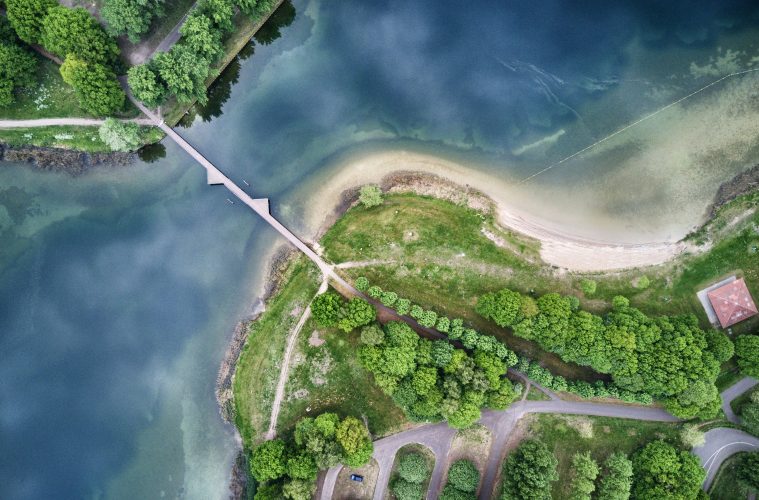Few experiences match the clarity and outright majesty of seeing something beautiful from the air. It’s a viewpoint humans have had true access to for a surprisingly short period of time. It was only a hundred or so years ago that a new world was opened when the likes of Ferdinand von Zeppelin and the Wright brothers graced us with their ingenuity. It’s a luxury to see these amazing aerial views and what better way to see them then by private jet?
It was while traveling on a Cessna Citation light jet over the stunningly azure French Riviera that I was inspired to write an article about the most breath-taking aerial views from a private jet.
It goes without saying that few aerial views match the likes of the Mediterranean coastline or the Himalayas, even Hawaii’s Kauai Island. What about some of the more unusual aerial views sightseeing opportunities the world has to offer?
I decided to explore some of the Earth’s aerial views that have so far seen far less publicity than you might expect.
Grand Prismatic Spring, Yellowstone National Park, USA

As the largest hot spring in the USA, you might think the Grand Prismatic spring would have gained cult status in the world of tourist attractions. It’s out-of-this-world colouration, caused by pigmented bacteria, matches the visible light spectrum, giving it a bizarre rainbow effect that is seen no-where else on Earth. With a diameter of 300 feet, it’s much easier to fully appreciate the spring from above. This photograph was taken at around 2000 feet from a chartered aircraft.
The Door to Hell, Turkmenistan

The Derweze Crater, otherwise known as the “Door to Hell”, is a 200-foot crater that formed after a gas drilling operation collapsed in 1971. The incident resulted in the escape of large quantities of methane gas, posing considerable risk to the local population. A group of Soviet scientists decided that burning off the excess gas was the safest solution, expecting it to burn out within a few weeks. As it happens, the same fire is still burning, over 4 decades after it was lit. The crater makes for an incredible aerial sight, particularly at night when the glowing hole forms a stark contrast against its desolate desert surroundings.
Fly Geyser, Nevada, USA
The Fly Geyser is truly out of this world to behold; in fact those that haven’t experienced it first-hand could be forgiven for mistaking it as the work of computer generated imagery. It is in fact real, and was accidentally created by experimental well drilling in 1964. The geyser has become a well-loved mistake that has been spewing water constantly ever since. Made up of deposited minerals, the geyser is formed of several terraces of pools that cover 74 acres, and is constantly increasing in size. The incredible coloration changes regularly and is caused by algae. Located on private land, one of the few ways to get close to the awe-inspiring sight is from the air, with many opting for a private aircraft or helicopter charter route that takes in such a sight.
Zhangye Danxia Landform, Gansu, China

These unique rock formations are the result of red sandstone and mineral deposits being laid down over 24 million years. These layers were then crumpled into their present form by the same tectonic plate that is responsible for Everest. The size and scope of the landform means that an aerial viewpoint is a must.
Tianzi Mountains, Hunan, China

It’s said the Tianzi Mountains were the inspiration behind the James Cameron’s world in Avatar, and it’s easy to understand why. Made up of hundreds of spindle-like rock formations, some of the mountains rise up to around 4000-feet above sea level and are impossibly narrow, seemingly defying gravity and the elements to stay upright. With solitary, ancient pine trees growing atop the millennia old outcrops, the Tianzi mountains make for a breath-taking aerial sight.
The Wave, Utah, USA

The Wave is a sandstone rock formation near the Arizona-Utah border. Its highly unusual striped appearance is a result of differing sandstone layers, laid down over millions of years and worn into gullies by rain water. Park officials only issue 20 access permits per day by way of a lottery, making it very difficult for anyone but locals to plan a visit. This coupled with the fact that its only means of access is a 6 mile hike across open desert on unmarked trails, could account for its relative obscurity outside the USA. Of course, for those not au fait with desert survival, aerial observation by means of a private charter solves all of these problems.
Birthday Canyon, Greenland

Water from melting ice has over time worn this canyon to its 30-40m depth, resulting in an icy river of bright turquoise water. Constantly changing at the hands of climate change, and in one the most remote locations in the world, this site is always different each time it is visited. Interestingly, Chapman Freeborn collaborated with EYOS Expeditions this year to offer private jet and luxury yacht transport to the Arctic regions.
Blue Dragon River, Portugal

The Odeliete River is known by locals as the “Blue Dragon River”, which at ground level might seem like a meaningless name. Its only when viewed from above that the river’s unusual jagged edges, blue water and tight curls are fully appreciated, culminating in a distinct dragon-like appearance. The river is just north of the Algarve and sits on potential flight paths from the popular tourist destination to major Spanish cities including Madrid, Seville, Cordoba and Valencia.
Article by Michael Cooper


